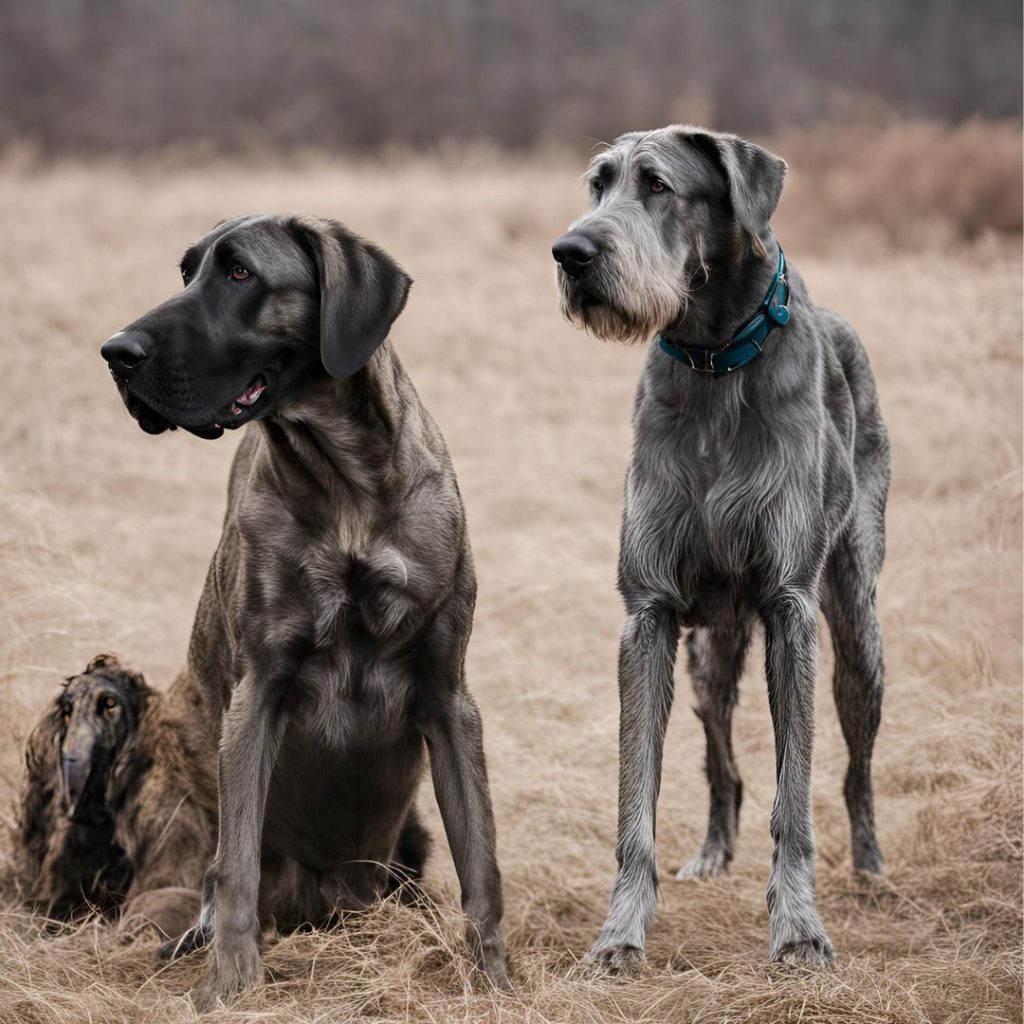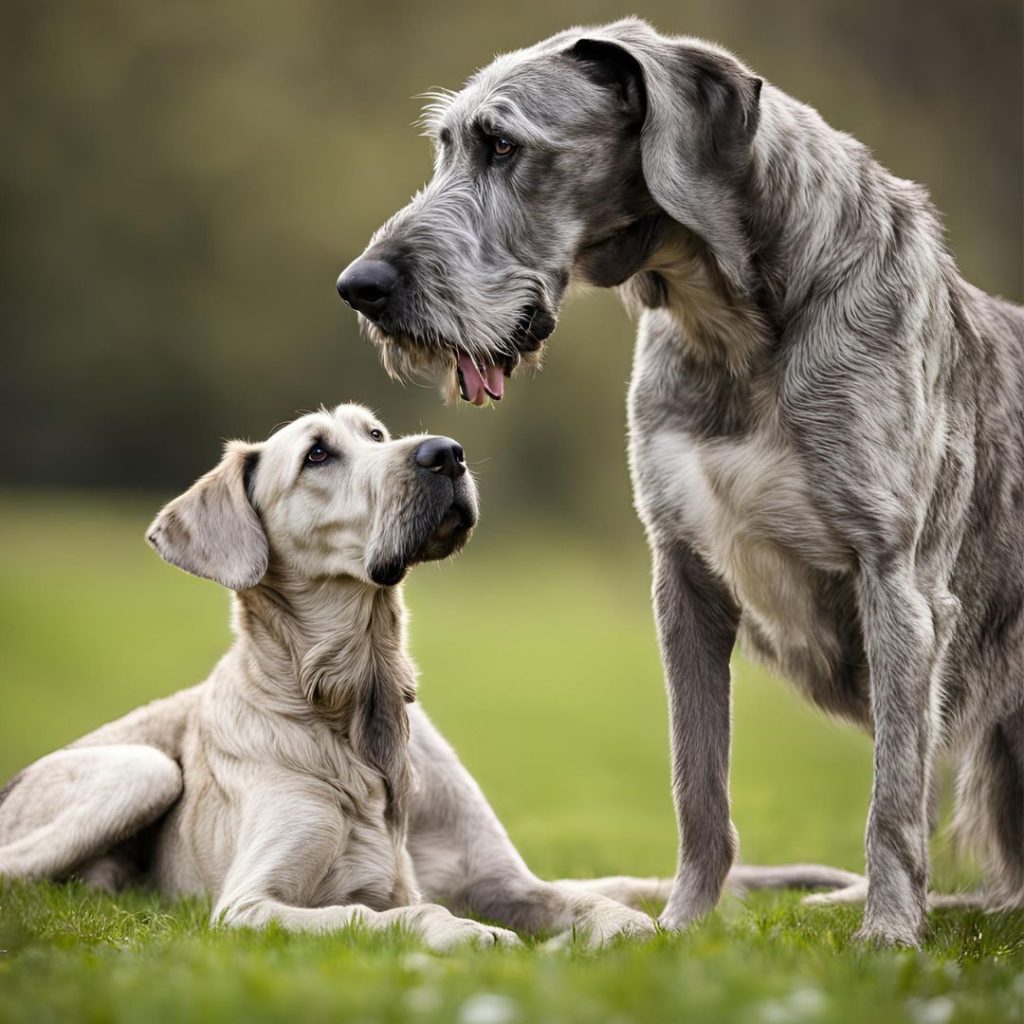
Great Dane vs Irish Wolfhound are a remarkable group of canines known for their impressive size, strength, and often gentle demeanor. These breeds have historically served a variety of purposes, including hunting, guarding, and companionship. Despite their intimidating size, many giant dog breeds are irish wolfhound great dane mix renowned for their affectionate and loyal nature.
Introduction to Great Danes and Irish Wolfhounds
Two of the most iconic giant dog breeds are the Great Dane and the Irish Wolfhound. Both breeds are celebrated for their majestic appearance and unique characteristics. The Great Dane, wolfhound mw5 often referred to as the “Apollo of dogs,” is known for its regal bearing and sleek frame. The Irish irish wolfhound and great dane Wolfhound, on the other hand, holds the distinction of being one of the irish wolfhound puppies sale tallest dog breeds, exuding a noble and rugged charm.
Purpose of the comparison
This comparison aims to explore the differences and similarities between Great Danes and Irish Wolfhounds, focusing on their physical traits, temperaments, and health considerations. By What Breed A Cat understanding these aspects, potential owners can make informed decisions about which breed may be the irish wolfhound next to great dane best fit for their lifestyle and preferences.
Physical Characteristics
Size and stature of Great Danes
Great Danes are among the largest dog breeds, with males typically standing 30 to 34 inches tall at the shoulder and weighing between 120 and 200 pounds. Their sleek and muscular wolfhound great dane build gives them a striking and elegant appearance.
Size and stature of Irish Wolfhounds
Irish Wolfhounds are similarly massive, with males often reaching heights of 32 to 35 inches at the shoulder and weighing between 140 and 180 pounds. Their taller, more rugged frame reflects great dane wolfhound their history as hunters of large game such as wolves.
Distinctive features of each breed
Great Danes are known for their long, Great Dane vs Irish Wolfhound narrow heads, floppy ears, and deep chests. Irish Wolfhounds, by contrast, have a more wiry coat, a long and slightly curved tail, and a distinctive beard and eyebrows that enhance their expressive faces.
Comparison of coat types and colors
Great Danes typically have short, smooth coats that come in various colors, including fawn, brindle, black, blue, and harlequin. Irish Wolfhounds have a rough and wiry coat, often found in shades of gray, brindle, red, black, or white. The differing coat types also impact grooming needs, with Irish Wolfhounds requiring more frequent maintenance.
Temperament and Behavior
General temperament of Great Danes
Great Danes are often described as gentle giants. They are friendly, affectionate, and good-natured, making them excellent family companions. Despite their size, they are known for being calm and easygoing.
General temperament of Irish Wolfhounds
Irish Wolfhounds are equally gentle and loyal, though they may have a slightly more reserved demeanor. They are known for their patience and are often described as noble and dignified.
Socialization and interaction with families and children
Both breeds are well-suited for families and are generally good with children. However, their large size necessitates supervision during interactions with young kids to prevent accidental injuries. Proper socialization from an early age is crucial for both breeds to ensure they are well-mannered and adaptable.
Differences in energy levels and exercise needs
Great Danes tend to have moderate energy levels, requiring regular walks and playtime. Irish Wolfhounds, while not overly active, have a history as hunting dogs and may have occasional bursts of energy. Both breeds benefit from a balance of physical and mental stimulation.
Health Considerations
Common health issues in Great Danes
Great Danes are prone to certain health conditions, including hip dysplasia, bloat (gastric torsion), and heart disease. Regular veterinary check-ups and a proper diet can help mitigate these risks.
Common health issues in Irish Wolfhounds
Irish Wolfhounds may face health challenges such as hip and elbow dysplasia, heart conditions, and bone cancer. Due to their size, they also have a relatively short lifespan.
Lifespan comparison
Both breeds have shorter lifespans compared to smaller dogs, with Great Danes typically living 7 to 10 years and Irish Wolfhounds averaging 6 to 8 years. Their large size contributes to their reduced longevity.
Importance of regular veterinary care
Routine veterinary care is essential for maintaining the health and well-being of both breeds. Early detection of potential issues, along with preventive measures, can significantly improve their quality of life.
Conclusion
Summary of key differences and similarities
Great Danes and Irish Wolfhounds share many similarities, including their gentle temperaments and impressive size. However, they differ in physical characteristics, coat types, and some aspects of behavior and health.
Considerations for potential owners
Potential owners should consider factors such as grooming needs, energy levels, and the space required to accommodate these giant breeds. Both breeds thrive in environments where they receive ample love, care, and attention.
Final thoughts on choosing between a Great Dane and an Irish Wolfhound
Choosing between a Great Dane and an Irish Wolfhound ultimately depends on individual preferences and lifestyle. Both breeds make wonderful companions, offering unmatched loyalty and affection to their families. With proper care, either breed can become a cherished member of the household.
